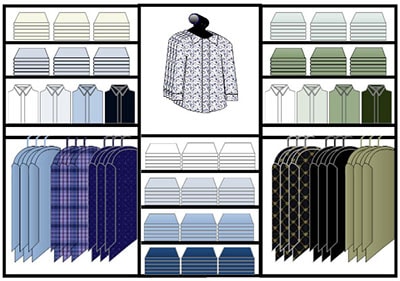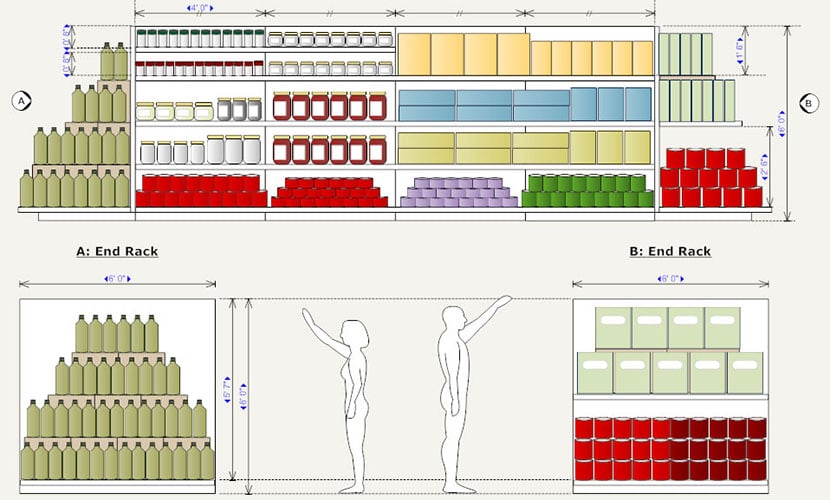What is a Planogram?
A Planogram is a popular retail technique that is used by retailers all over the world to determine the order in which retail products are to be placed in a shelf in order to increase purchase.

A Planogram is a diagram that shows where and how a product should be placed so that the chances of it being purchased increases. It is nothing but just a layout diagram of arrangement of retail products. An ideal Planogram will increase the sales of retail goods.
It is a skill that is mostly used in retail planning, in departmental stores and other retail outlets. The process of planogramming needs to be mastered and those who do take retail planning as a profession are known as planogrammers.
When someone opens up a store, they want the maximum sale. Believe it or not, apart from the product itself, the placement of the product will help decide the customer whether they want it or not. Thus, retail stores and departmental stores hire planogrammers to make sure that their customers have everything laid out for them just how they need it to be.
Why is Planogram a major practice in the retail industry?
Retail industry needs to flourish in every state and country, as it is a major component of GDP calculation. Planogram is widely used in retail industries due to its effectiveness. Here are a few points on why Planogram is given such importance in the retail industry?
Best Charts, Graphs, and Diagram Tools
- 10 Best Online Chart Maker of 2023
- 10 Best Microsoft Visio Alternatives 2023
- 10 Best Org Chart Maker of 2023
- 10 Best UML Diagram Tools 2023
- 10 Best Entity Relationship Diagram (ERD) Tools 2023
- Planogram helps to communicate on how to set merchandise the way it should be.
- Planogram ensures that there is sufficient product on the shelves for a customer to choose from, no more and certainly no less.
- It draws a plan to efficiently utilize the amount of space that is provided.
- It also makes sure that the customers get well acquainted with the brand identity.
- Planogram assist in the process of mapping a store.
How Planograms originally came into existence?
The first Planogram that was ever made was made with the help of a computer programme. The first Planogram came into existence when K-Mart used Planogram software that was made by an expert. Space planning has been around a long time.
In retail space, management has been there since the beginning, but it was only during the 1980’s when a computer or more specifically a computer programme was used. As the days are advancing software is custom made to fit the requirements of every retailer. Store specific programmes are coming into existence, and the retail industry is rising to its peak.
Uses of a Planogram
We have already established that Planograms have been into existence since the 80s. But here we will be talking about why exactly do we use them or what do they do?

Space elastic demand: The amount of space that a product is being allocated is directly proportional to the chances of it being sold. As space is limited, we need to calculate exactly how much space do we need to allocate to each product so that no product is being neglected.
Centralization: When someone draws out a map it gives a very clear idea of what is to be done. Similarly, when a planogram is made, it gives a very clear idea to every employee about the venture. One can maintain a consistent sales strategy or make some necessary changes if they want to.
Performance measurement: Planograms are drawn in a trial and error method. The first planogram that was drawn might not be perfect. But when the second Planogram is made, an idea from the first draft is taken into account and how different products faired with the first plan.
Advantages of Planograms
It is not true that only the retailer and the manufacturers will benefit from Planograms, consumers are also benefited in the process. Here we will be talking about how planning helps both the retailers and customers to fulfill their own goals.

Advantages of Retailers
- The retailer will instantly know what is out-of-stock and what they need to restock.
- Planogram is drawn based on customers’ demands, and thus a good Planogram will have a balance between customers demanded products and inventory.
- The retailer will be able to calculate purchase behavior in his store when everything is laid out neatly into shelves.
- Consistent planning is always great as each and every employee will know the agenda and will know exactly what to do.
- The retail space will be well optimized when there is a specific plan to follow.
- Customer satisfaction will be better when good and efficient planning is used.
Advantages of Customers
- Customers won’t have to search the entire market looking for just one thing. When done right Planogram will make sure that everything is at its best position.
- It will improve the relationship between the customers and retailers.
How do Planograms work?
A Planogram is a visual aid, and therefore it is a map, a map of how things should be to make sure that the customers face absolutely no problem in reaching them and also so that the retail space is well utilized. Previous sales patterns are taken into account while making a Planogram. Here we will be providing you with 5 tips on how to make a Planogram work for your retail store?
- Make sure that you have as much product as possible in every category.
- Communication with your suppliers to know what the market currently wants and needs.
- Don’t be afraid to include tactical strategies in your Planogram
- Always do sufficient researches before you go ahead and finalize on a Planogram.
- Once you have a Planogram make sure that you stick to it till the end and access the results.
Conclusion
As mentioned earlier Planograms are prevailing for quite some time now, and that is enough proof that it works. When done right a Planogram will redefine your business and make you an efficient businessman. But like all business tactics, it needs planning and patience. So if you don’t get it right the first time, learn from your mistakes.
